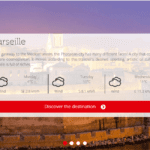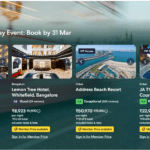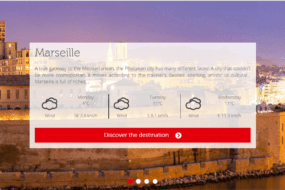
Traveling is one of the most enriching experiences life has to offer. It opens doors to new cultures, food, landscapes, and perspectives. But let’s be honest—traveling can also be expensive. The good news? It doesn’t have to be. Whether you’re a student, a solo adventurer, or just someone looking to make the most of your vacation without breaking the bank, budget travel is not only possible—it can be just as fulfilling (if not more) than luxury getaways. In fact, with the right planning, traveling on a budget often leads to more authentic, off-the-beaten-path experiences.
Here’s your ultimate guide to traveling smart, cheap, and meaningfully.
1. Set a Realistic Budget Before You Go
The first step to affordable travel is planning your budget. Before you even start looking at flights or accommodations, decide how much you can reasonably spend on your entire trip. Include everything—transportation, lodging, food, activities, souvenirs, insurance, and emergency funds.
Apps like Trail Wallet, Mint, or YNAB (You Need A Budget) can help you track your spending before and during your trip. Having a daily spending limit also keeps you accountable and helps prevent surprises.
2. Choose Budget-Friendly Destinations
Not all countries cost the same to travel. Southeast Asia, parts of Central and South America, Eastern Europe, and some regions in Africa offer incredible experiences at a fraction of the price compared to places like Western Europe or North America.
Examples of budget-friendly countries:
- Vietnam
- Indonesia
- Mexico
- Portugal
- Bulgaria
- Morocco
- Guatemala
- Colombia
- India
These places not only have lower costs of living, but also offer delicious food, rich culture, and stunning scenery.
3. Travel During Off-Peak Seasons
Timing matters. Traveling during the low or shoulder season (the time between high and low seasons) can significantly reduce costs. Flights and accommodations are often cheaper, and popular attractions are less crowded. Plus, locals are generally more available to engage with travelers when tourism isn’t at its peak.
Examples:
- Europe: Travel in April-May or September-October.
- Southeast Asia: Visit just before or after monsoon season.
- Caribbean: Avoid holidays and school breaks.
Always check the weather patterns and major holidays in your chosen destination before booking.
4. Be Flexible with Your Dates and Destinations
Flexibility is one of the best assets for budget travel. Use tools like Google Flights, Skyscanner, or Hopper to compare prices across dates. Flying mid-week (Tuesday or Wednesday) is often cheaper than weekends. Being open to flying into alternative airports can also save a lot.
For example, if you’re flying to Paris, check prices for flights to Brussels or Amsterdam and take a budget train or bus into France.
5. Use Budget Airlines and Fare Alerts
Low-cost carriers like Ryanair, EasyJet, AirAsia, and Frontier can be your best friends when traveling cheap. Just be sure to read the fine print—many budget airlines charge extra for checked bags, seat selections, and even carry-ons.
Sign up for fare alerts on sites like:
- Scott’s Cheap Flights (now called Going)
- Airfarewatchdog
- Skyscanner Price Alerts
- Secret Flying
These services notify you when fares drop or mistake fares pop up.
6. Pack Light and Smart
Traveling with only a carry-on saves you money on baggage fees and makes it easier to move around, especially when using public transportation. Choose versatile clothing that can be layered and mixed. Don’t forget essentials like reusable water bottles, travel-sized toiletries, and a first-aid kit.
Tip: Pack a microfiber towel and flip-flops for hostel stays, and always bring a lock for securing your bags in shared spaces.
7. Stay in Budget Accommodations
Hotels aren’t your only option. Consider alternatives like:
- Hostels: Great for meeting fellow travelers. Many offer private rooms as well.
- Guesthouses: Common in Southeast Asia and Latin America.
- Vacation Rentals (Airbnb, Vrbo): Especially affordable for groups.
- Couchsurfing: Stay with locals for free and get insider knowledge of the area.
- House Sitting: Platforms like TrustedHousesitters allow you to stay for free in exchange for watching someone’s home or pets.
Look for places with free breakfast or kitchen access—two simple ways to cut food costs.
8. Use Public Transportation or Walk
Skip the taxis and Ubers—public transit is usually a fraction of the price and gives you a local perspective. Metro cards, day passes, and transit apps make it easy to navigate.
Many cities are incredibly walkable, and exploring on foot is free, healthy, and often the best way to discover hidden gems.
Apps to help:
- Citymapper
- Moovit
- Rome2Rio
- Google Maps Offline Mode
For longer distances, consider overnight buses or trains—you’ll save on a night’s accommodation and wake up in a new place.
9. Eat Like a Local
Dining at touristy restaurants can be pricey. Instead, follow locals to street food stalls, hole-in-the-wall eateries, and local markets. Not only is it cheaper, but it’s also more authentic.
Tips:
- Visit local supermarkets for snacks, fruit, or picnic ingredients.
- Use apps like HappyCow (great for vegan/vegetarian travelers), Yelp, or Google Reviews to find affordable, top-rated local spots.
- Don’t be afraid to try street food—in many countries, it’s the most delicious option!
Cooking some of your own meals, if your accommodation allows it, can also save you a lot.
10. Seek Out Free and Cheap Attractions
Most cities have plenty of free or low-cost things to do:
- Museums with free days or donations
- Public parks, beaches, and hiking trails
- Local festivals and cultural events
- Free walking tours (just tip your guide!)
- Historical landmarks
Download self-guided walking tour apps or use blogs to find curated itineraries. If you’re a student or under 26, bring your ID—many places offer discounts.
11. Use Travel Reward Programs and Credit Cards
If you travel often, it’s worth getting a travel rewards credit card. Many offer sign-up bonuses, free checked bags, access to airport lounges, and points or miles that can be redeemed for flights or hotels.
Popular cards:
- Chase Sapphire Preferred/Reserve
- Capital One Venture
- American Express Platinum
- Bank travel reward cards
Just be sure to pay off your balance monthly to avoid interest.
You can also rack up miles through airline loyalty programs—even if you’re flying a budget airline, sometimes they partner with larger carriers.
12. Limit Souvenirs
It’s tempting to bring back gifts and trinkets, but they can eat up both your budget and your luggage space. Instead:
- Take lots of photos.
- Collect postcards, tickets, or maps.
- Buy one meaningful item from a local artisan or market.
- Support experiences over objects—a cooking class, a guided hike, or a music show makes for a richer memory.
13. Travel with a Group
Group travel can reduce costs dramatically. Splitting accommodations, groceries, or car rentals can make a huge difference. Look for group tours with budget-friendly options or consider co-traveling with friends.
There are also group travel agencies that offer affordable packages for young travelers (like G Adventures, Contiki, or Intrepid Travel).
14. Work While You Travel
Want to travel longer without draining your savings? Consider working while on the road:
- Work exchanges: Websites like Workaway, WWOOF, and HelpX offer free lodging in exchange for a few hours of work per day.
- Teaching English: Many countries hire English speakers to teach, especially in Asia.
- Digital nomad jobs: Freelancing, blogging, graphic design, social media, or remote customer service can all be done from anywhere with Wi-Fi.
Just be mindful of visa requirements and labor laws in your host country.
15. Be Culturally and Environmentally Conscious
Being a budget traveler doesn’t mean being a careless one. Respect local customs, tip when appropriate, and support small businesses. Travel responsibly by avoiding exploitative experiences (like unethical wildlife tourism) and minimizing waste.
Simple eco-friendly tips:
- Bring a reusable bag and utensils.
- Say no to plastic bottles—use a filtered water bottle.
- Use public transport or shared rides.
- Offset your carbon footprint when booking flights.
16. Plan, But Stay Spontaneous
Planning ahead helps you score deals on flights, accommodations, and major attractions. But some of the best travel experiences are unplanned.
Stay open to changing your route, taking recommendations from locals or fellow travelers, and embracing detours. That flexibility can lead you to cheaper and more exciting experiences than what’s in the guidebooks.
Final Thoughts
Budget travel is about making the most of your resources—not cutting corners, but being intentional with how and where you spend. You don’t need a luxury resort or five-star meals to have a life-changing adventure. Often, it’s the street food stall in a bustling market, the bus ride with strangers who become friends, or the sunrise hike with a view that takes your breath away that stays with you the longest.
With smart planning, a little flexibility, and the right mindset, you can travel far and wide without emptying your bank account. So go ahead—dust off that backpack, book that ticket, and start your next affordable adventure.
Bon voyage!






















